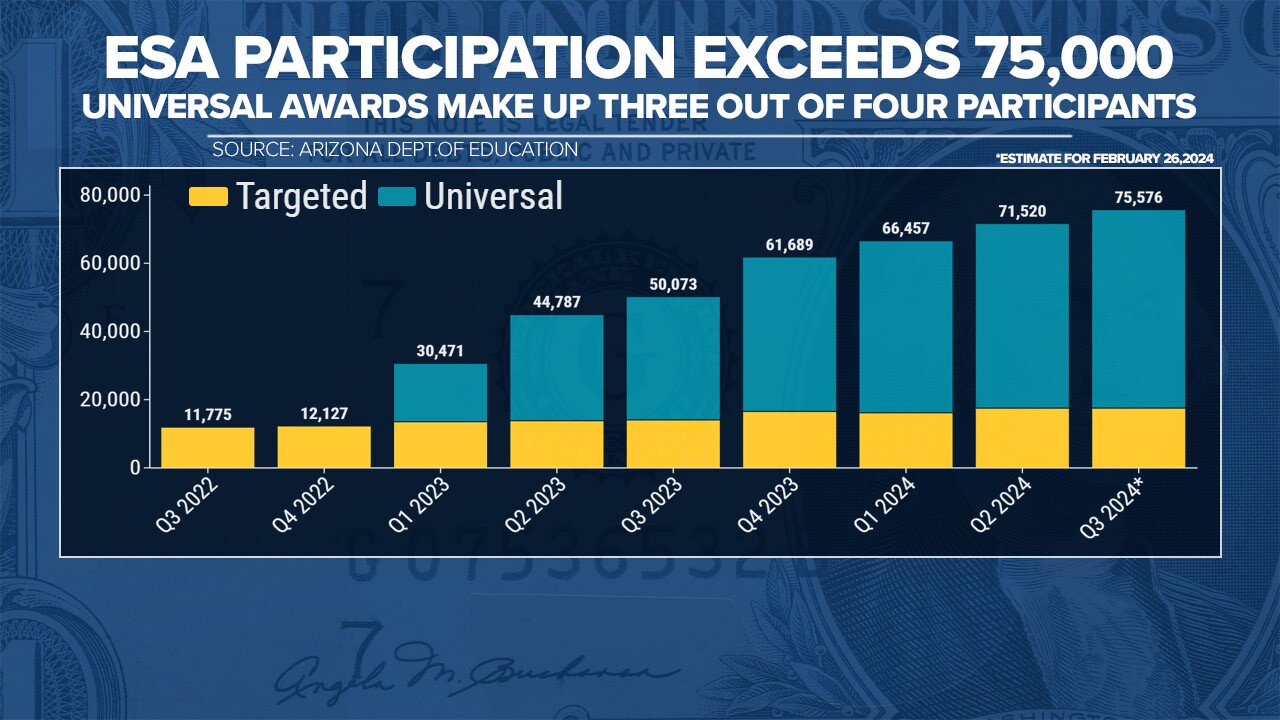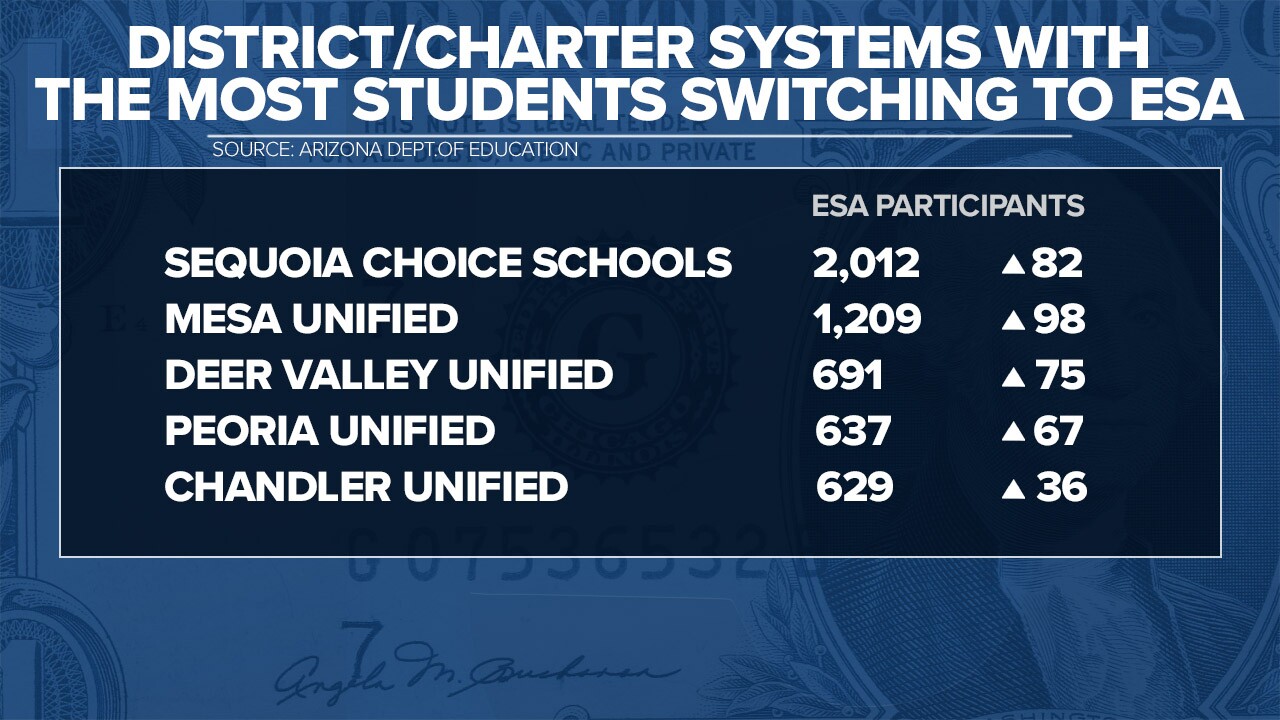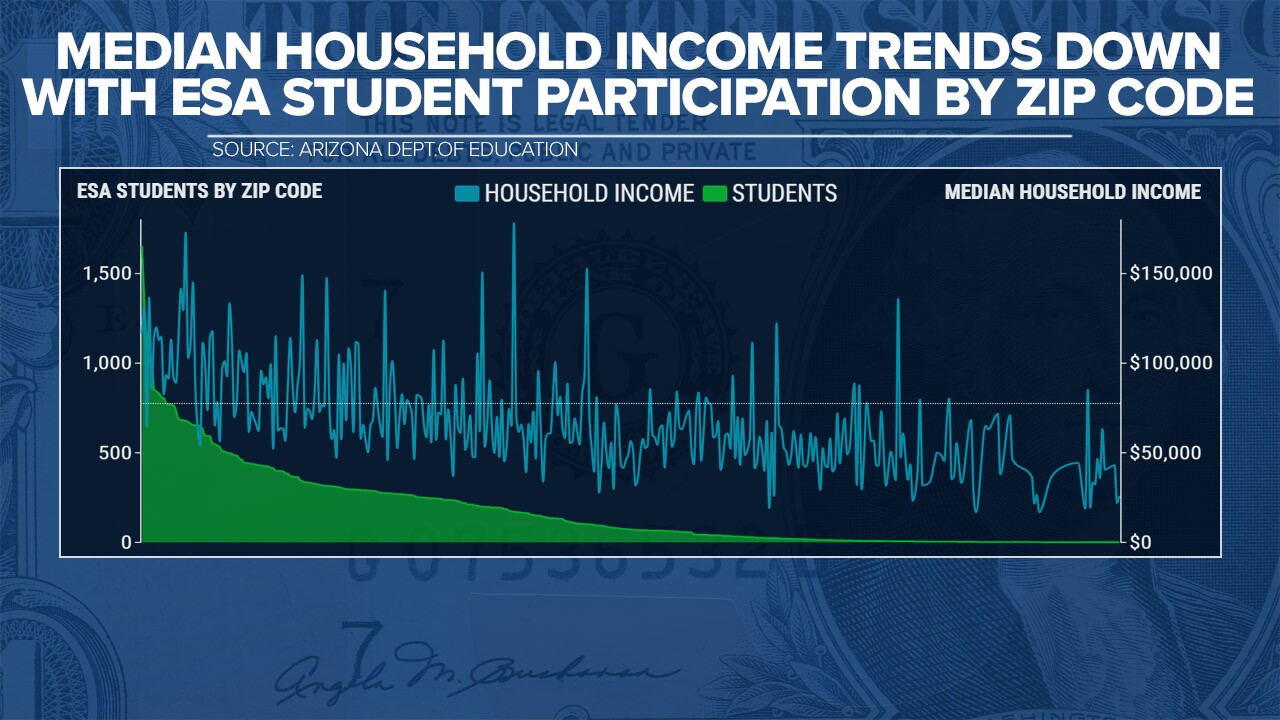A quarterly report released by the Arizona Department of Education shows that while the state’s school choice Empowerment Scholarship Account program is still growing, the rate is beginning to slow. Participation in the program remains tilted toward students living in zip codes with median household incomes higher compared to the whole state.

When it comes to the ESA program, there are two programs side by side. Targeted ESA awards are mostly geared toward children with learning disabilities. Universal ESA is the program that began last year after being signed into law by former Governor Doug Ducey which allots approximately 90% of per-pupil funding to parents to manage their child’s education themselves.
According to the Department of Education’s website, total enrollment in ESA exceeded 75,000 students in the last week of February. The program added around 4,000 students in the second quarter of fiscal year 2024. This is a further slowdown from the prior quarter when 5,000 students were enrolled in ESA.
The report also provided details on where students who transitioned from public school were previously enrolled. The system with the most number of previous students that are now ESA enrollees is the online charter school Sequoia School Choice Schools. Over 2,000 ESA students were previously enrolled in their online charter school. Sequoia’s parent company EdKey also maintains an online private school as well as micro schools. Both of which accept ESA dollars.
The next four public school systems with the largest ESA enrollees are all large, suburban unified districts: Mesa, Deer Valley, Peoria, and Chandler Unified School Districts.

An analysis of all ESA enrollees by zip codes finds that zip codes with more ESA enrollees tend to also have median household incomes higher than the state’s median of $74,568. The Yuma County zip code 85365 is the only one of the top five outside of Maricopa County as well as the only one with a lower median household income than Arizona. Three out of five have median household incomes in the six-figure range.

When zip codes are sorted by highest to lowest ESA enrollee population, a trend emerges in which nearly all zip codes with the greatest number of enrollees all have median incomes over $74,000, while most zip codes with the least number of enrollees are below that mark.





